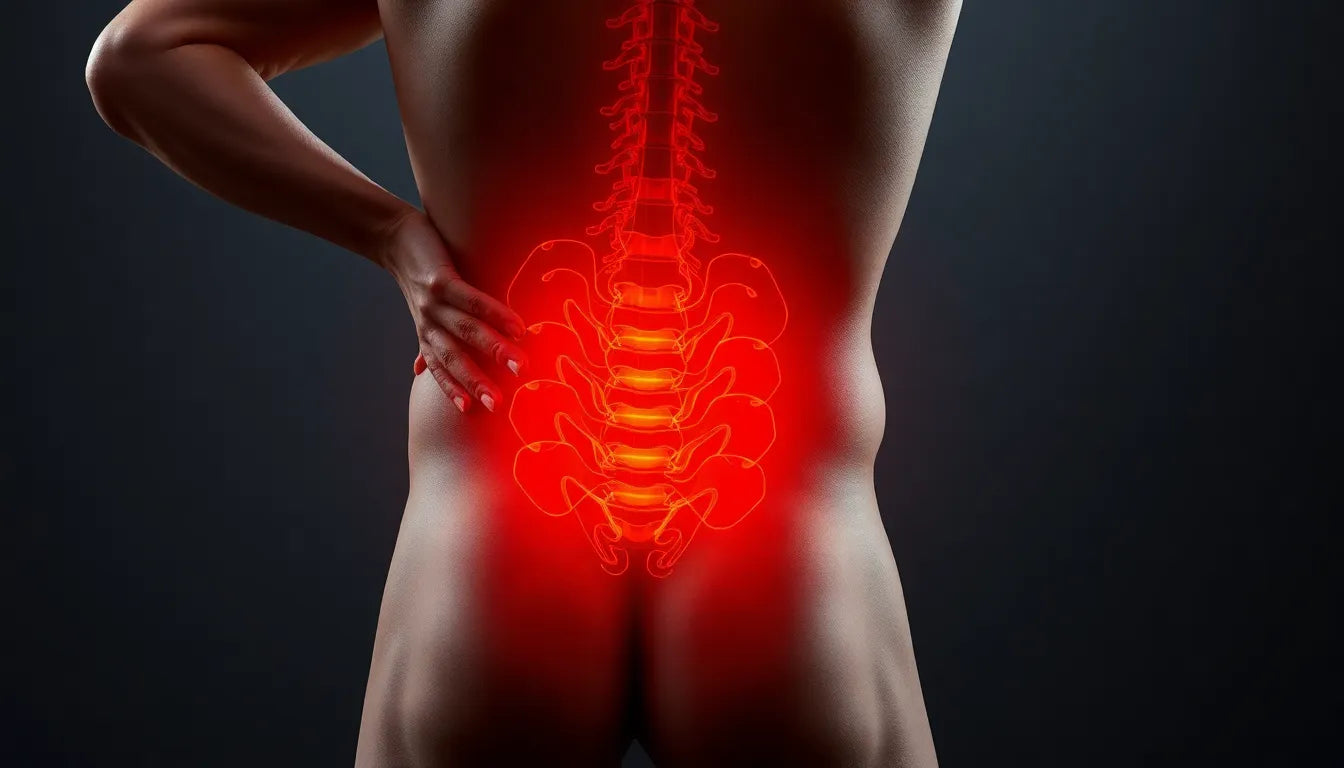Understanding sciatica and its impact is crucial for anyone experiencing discomfort along the sciatic nerve. Sciatica is a condition characterized by pain that radiates from the lower back through the hips and buttocks and down each leg. This pain is often caused by irritation, inflammation, pinching, or compression of the sciatic nerve, which is the longest nerve in the body. Sciatica can be a debilitating condition, affecting daily activities and overall quality of life. Common symptoms include sharp pain, numbness, tingling, and muscle weakness in the lower extremities.
The prevalence of sciatica is notable, with many individuals experiencing it at some point in their lives. It's essential to recognize the signs early and consider effective management strategies. One non-invasive and highly recommended approach to managing sciatica is through targeted exercises. These sciatic nerve exercises not only help alleviate pain but also promote long-term health and mobility.
The role of exercise in managing sciatica
Exercise plays a pivotal role in managing sciatica. Therapeutic exercises are designed to reduce acute pain, enhance mobility, and prevent future episodes of sciatic pain. Unlike prolonged rest, which can lead to muscle stiffness and decreased blood flow, regular exercise can improve muscle conditioning and spinal stability. This improvement aids in reducing pressure on the sciatic nerve and promotes healing of the affected area.
There is substantial evidence supporting the benefits of exercise over rest for managing sciatic pain. Engaging in structured, regular exercises enhances blood flow, which is crucial for soft tissue and nerve healing. Moreover, strengthening the muscles that support the spine can prevent further injury and pain recurrence. By incorporating sciatic nerve exercises into a daily routine, individuals can experience significant relief from symptoms and an improved quality of life.
Hook: the power of practice
Consistency is key when it comes to unlocking relief from sciatic pain. With a set of reader-approved exercises, you can effectively manage your symptoms and regain control over your life. These exercises are designed to be easy to incorporate into your daily routine, requiring minimal equipment and effort. Through regular practice, you can experience the transformative power of exercise, reducing pain and enhancing your overall well-being.
In the following sections, we will delve deeper into specific exercises that target the sciatic nerve, providing step-by-step instructions to ensure you perform them correctly. Remember, the path to relief begins with understanding and commitment. By embracing these exercises, you're taking a proactive step toward a pain-free future.
Effective sciatic nerve exercises
When it comes to alleviating sciatic pain, incorporating a range of exercises that focus on stretching, strengthening, and nerve mobilization is essential. These exercises are specifically designed to target the areas affected by sciatica and help in reducing pain, improving flexibility, and supporting overall nerve health. Understanding the purpose and technique of each exercise is crucial for maximizing their benefits.
Exercise 1: hamstring stretch
The hamstring stretch is a fundamental exercise for relieving pressure on the sciatic nerve. Tight hamstrings can exacerbate sciatic pain by pulling the pelvis out of alignment, which increases tension on the lower back. Here's how to perform this stretch effectively:
- Sit on the edge of a chair with one leg extended straight out and the other foot flat on the floor.
- Lean forward gently, keeping your back straight, until you feel a stretch in the back of the extended leg's thigh.
- Hold this position for 20-30 seconds before switching to the other leg.
- Repeat this stretch three times per leg for optimal results.
Exercise 2: knee-to-chest stretch
This exercise is excellent for relieving tension in the lower back, which can contribute to sciatic discomfort. By gently stretching the lower back muscles, you can help alleviate pressure on the sciatic nerve. Follow these steps to perform the knee-to-chest stretch:
- Lie on your back with both knees bent and feet flat on the floor.
- Bring one knee up to your chest, holding it with both hands.
- Hold the position for 20-30 seconds, then switch to the other leg.
- Repeat this exercise three times per leg.
Exercise 3: piriformis stretch
The piriformis muscle, located in the buttock region, can sometimes irritate the sciatic nerve. Stretching this muscle can help alleviate symptoms of sciatica. Here's how to perform the piriformis stretch:
- Lie on your back and cross one leg over the opposite knee.
- Gently pull the uncrossed leg toward your chest until you feel a stretch in the buttock of the crossed leg.
- Maintain this position for 20-30 seconds and then switch legs.
- Perform this stretch three times on each leg.
Exercise 4: core strengthening
Strengthening the core muscles is vital for supporting the spine and reducing sciatic pain. A strong core helps maintain proper posture and reduces the strain on the lower back. The basic plank is an effective exercise for building core strength:
- Lie face down on the floor, then lift your body onto your toes and forearms, keeping your body straight.
- Hold this position for 20-30 seconds, gradually increasing the duration as your strength improves.
Exercise 5: nerve gliding technique
Nerve gliding, or neurodynamics, involves gentle movements that help mobilize the sciatic nerve, improving its flexibility and reducing adhesions. This technique can enhance nerve health and alleviate pain. Here's how to perform a simple nerve gliding exercise:
- Sit upright on a chair with good posture.
- Extend one leg straight out, flexing the foot upwards while tilting your head down.
- Alternate by bending the knee and pointing the toes, simultaneously lifting your head back up.
- Perform 10-15 repetitions per leg.
By incorporating these exercises into your routine, you can effectively manage sciatic pain and improve your overall mobility and quality of life. Consistency is key, and with regular practice, these exercises can help you regain control over your symptoms and enjoy a more active, pain-free lifestyle.

Lumbar support belt
Provides lower back support to relieve pain and stabilise your lumbar for daily relief.
incorporating aerobic exercise for sciatic relief
In addition to targeted exercises, incorporating low-impact aerobic activities such as walking or swimming can significantly enhance blood flow and overall nerve health. These activities not only support the healing process but also improve cardiovascular fitness, which is beneficial for overall well-being. Walking, for example, is a gentle way to maintain mobility and can be easily integrated into daily routines. Swimming, on the other hand, offers a buoyant environment that reduces pressure on the joints and spine, making it an excellent choice for those with more severe symptoms.
combining exercises for optimal results
For comprehensive pain relief and improved function, it is advisable to combine stretching, strengthening, and nerve mobilization exercises. This multi-faceted approach addresses various aspects of sciatic pain, from muscle tightness to nerve flexibility, ensuring a well-rounded management strategy. By consistently practicing these exercises, individuals can enhance their physical resilience and reduce the likelihood of future sciatic episodes.
safety tips and when to consult a professional
While performing these exercises, it is crucial to listen to your body and avoid positions that exacerbate pain. If any exercise causes discomfort or if symptoms persist, it is recommended to consult a healthcare professional. They can provide personalized guidance and ensure that exercises are performed correctly and safely. Additionally, professionals can identify any underlying issues that may require further medical intervention.
frequently asked questions
how often should I perform these exercises?
Aim for daily practice, but at least 3-4 times a week for best results. Consistency is key to experiencing significant improvements.
can these exercises cure sciatica?
While exercises can significantly relieve symptoms and prevent recurrence, they may not cure underlying causes. It's important to address any contributing factors with a healthcare provider.
what if the exercises increase my pain?
If pain increases, stop the exercises and consult a professional to ensure proper technique and suitability for your condition.
are there any ergonomic products that can help?
Ergonomic aids, such as supportive chairs or cushions, can complement exercises by reducing strain during daily activities. These products help maintain proper posture and minimize pressure on the sciatic nerve.

Men's Posture Shirt™ - Black
Improves posture and can relieve back pain with patented muscle-activating technology.
Kilder
- Medical News Today. (2017). "What to know about sciatica."
- Health and Social Services Hub. (n.d.). "Sciatica Exercises: What Does the NHS Recommend?"
- Healthline. (n.d.). "Sciatic Stretches."
- Orthopaedic Associates of Hartford. (2020). "Sciatica Exercises."
- Harvard Health Publishing. (n.d.). "Sciatica: Gentle Stretches to Help Relieve Pain and Improve Mobility."
- National Center for Biotechnology Information. (n.d.). "Sciatica."
- Hospital for Special Surgery. (n.d.). "Sciatica Stretches."
- American Family Physician. (2007). "Evaluation and Treatment of Acute Low Back Pain."
- NHS. (n.d.). "Exercises for Sciatica Problems."
- Cleveland Clinic. (n.d.). "Sciatica."
- Arkansas Surgical Hospital. (n.d.). "Relieve Sciatica Pain with These Simple Exercises."
- Mayo Clinic. (n.d.). "Sciatica: Diagnosis & Treatment."
- Princeton Orthopaedic Associates. (n.d.). "Sciatica Stretches."


















